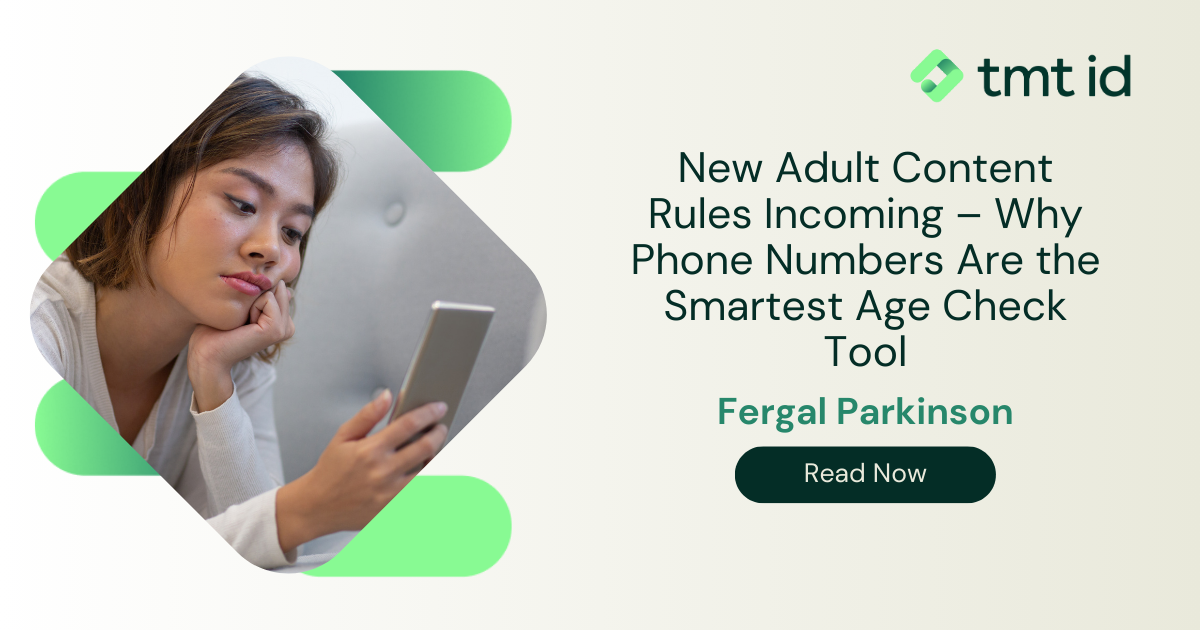
From Paris to Canberra, governments are tightening the rules around who can legally access adult content online. In France, authorities have begun blocking non-compliant sites at the ISP level, leaving platforms with a stark choice: adopt effective, privacy-conscious age gates or disappear from public view. Australia’s eSafety Commissioner has mapped out a national framework that puts age verification at the heart of its child-protection plans. In Germany, domain-level blocks are already in effect for sites that ignore Jugendmedienschutz requirements.
The direction is clear. In almost every mature market, meaningful age assurance is moving from “best practice” to a baseline legal obligation.
In the UK, Ofcom has set a hard deadline. By 25 July 2025, all pornography services, whether dedicated sites or larger platforms that host explicit content, must have “highly effective” age verification in place. Non-compliance could mean heavy fines or being blocked altogether.
Crucially, Ofcom’s own guidance names mobile-network operator (MNO) checks as one of the approved methods. These rely on a simple principle: if the number is tied to an adult mobile contract, it clears the 18+ bar. It’s listed alongside other options like photo ID matching and facial age estimation, but with far less friction.
In a landmark 6-3 ruling handed down on the 27th of June, 2025, the U.S. Supreme Court upheld Texas HB 1181, confirming that “adults have no First Amendment right to avoid age verification.” Free Speech Coalition v. Paxton technically applies only to Texas, but the implications are national. The decision shifts the legal standard from strict scrutiny to intermediate scrutiny, opening the door for other states to follow suit.
Importantly, the Texas law doesn’t mandate a single technology. It allows for any “reasonable age-verification method,” explicitly including systems based on transactional data, such as mobile-subscriber information. Louisiana’s Act 440, along with similar bills in more than a dozen states, uses almost identical language. Utah’s proposed social-media regulations go even further, naming mobile number validation as a standalone option.
|
Legacy age checks |
MNO data age checks |
|
|
User friction |
Upload ID, selfie, wait |
Enter a mobile number |
|
Privacy |
Site sees personal documents |
Site receives “18+ / under-18” only |
|
Drop-off risk |
High, risk of ID fraud |
Low, under 4 seconds |
|
Data burden |
Must store sensitive files |
Minimal data, pseudonymised |
Mobile-network data hits a rare sweet spot: it’s fast, private, and regulator-approved. Here’s why it’s gaining ground:
Total time? Around 3 seconds. That’s short enough to keep people from bouncing and strong enough to satisfy an audit.
Platforms can also add our Authenticate check to confirm that the person entering the number is using the correct SIM card and is physically present on the device, helping to prevent spoofing or number misuse.
As the 25th of July UK deadline approaches and enforcement momentum builds across U.S. states, the days of “Are you over 18?” tickboxes are numbered. Mobile-number age assurance offers a pragmatic alternative:
The question is no longer whether age checks are required, but how to do them without collecting more data than you need. Mobile-network age assurance answers that with a privacy-first, regulation-ready solution that works in seconds and doesn’t get in people’s way.
As the UK’s enforcement deadline and the Paxton precedent converge, phone-number checks are on track to become the default route through the 18+ gate, simple, secure and designed to work in the real world.
The largest fine under the new laws has just been imposed against a porn company that failed to comply.
Last updated on December 8, 2025



Complex age verification processes lead to lost customers. Mobile-based age assurance simplifies the process, ensures compliance and improves conversion
Learn more about Age AssuranceWe provide the most comprehensive device, network and mobile numbering data available
Contact us > Chat to an expert >